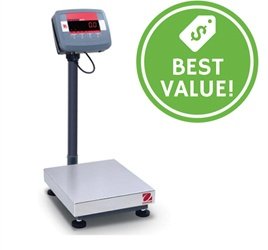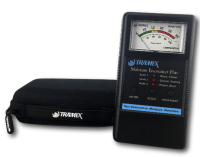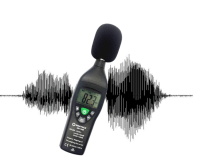How to Assemble an OHaus Defender 2000 Series Scale

The OHaus Defender 2000 series of scales strikes the perfect balance between accuracy and affordability for commercial and industrial weighing applications.
Follow the 16-steps in this video article to discover how simple it is to assemble any product in the OHaus Defender 2000 Series.
Figure 1 Watch an Instrument Choice demonstrate How to Assemble an OHaus Defender 2000 Series Scale here.
How to Setup an OHaus Defender 2000 Series Scale
Required for Assembly
- Plyers (Optional)
- Assembly Hardware Kit (1 x Allen Key, 3 x Screws)
- T24PE Indicator
- Mounting bracket for T24PE
- Indicator Mounting Pole
- Load Cell Base
- Stainless steel pan
- Power Adaptor
Method
Assembly Note:
In the featured video, an Instrument Choice Scientist is using the Defender 2000 Series Scale 150Kg Capacity Product Code: IC-D24PE150FL as an example. Assembly may vary slightly between models.
Travel Stabilisers:
- Pull to remove the four travel stabilisers from the load cell base. The removal can be done by hand or using a tool such as a pair of plyers.
Indicator Mounting Pole Installation:
- Find the side with the internal reinforcement. This side of the pole must be facing the load cell.
- After confirming the pole direction, thread the load cell cable through the hollow pole.
- Insert the indicator mounting pole into the moulded area on the load cell base.
- Once you have inserted the indicator mounting pole into the load cell base, double the cable over within the pole to reduce excess cable. For this assembly, we left around 30cm of cable exposed.
- Use the Allen key and three screws that come in the hardware kit to lock the pole into place. The three screw holes are on the load cell base.
Indicator Mounting Bracket:
- Thread the remaining cable through the indicator mounting bracket. The easiest way to tread the cable through is to disconnect the bracket into its two pieces. Disconnection can be performed by loosening and removing the bolt just under the mounting frame.
- Thread the load cell cable through the bottom half of the mounting bracket and place it onto the pole.
- Twist to lock into place.
- Reinstall the top half of the bracket and bolt back into place then, pull the cable through.
Levelling
- Check the bubble level(located at the rear of the base) to ensure that the scale is level. If not, adjust any of the four levelling feet until the bubble in the level indicator is centred.
Stainless Steel Pan
- Place the stainless steel pan over the load cell.
Install T24PE Indicator
- Install the T24PE indicator by lining up and sliding onto the mounting tracks.
- Plug the cable into the cable connector on the base of the T24PE unit and twist the ring to lock.
- Plug the power adaptor into the power port on the T24PE and plug it into a power outlet.
- Press ON/ZERO to turn the unit on, set up is complete!
Conclusion
The OHaus Defender 2000 series of scale is ideal for commercial and industrial weighing applications when you need accuracy and fast results. The assembly of this scale is simple, requiring only 16 straightforward steps.
If you would like more information on this scale, the defender 2000 series range, or how to assemble this scale, see the additional links (below) or contact us!
Additional links
- View the IC-D24PE150FL OHaus 150 kg Defender 2000 Economic Bench Scale here.
- Watch 'How to Setup an OHaus Defender 2000 Series Scale' again.
- Watch an Instrument Choice Scientist 'Unboxing an OHaus Defender 2000 Series Scale'
- Learn more Ohaus Scales through the article Types of OHAUS Scales
- Browse the full range of OHaus scales and balances by clicking here.
Also interesting
The Moisture Encounter Plus Meter (IC-MEP) is used to determine areas of high moisture or potential moisture ingress making it an excellent tool for building inspectors, pest control technicians, plumbers and flooring installers. For accurate measurements on the IC-MEP, it is vital to understand the method of measurement the meter employs and how best to interpret the results.

A decibel is a unit used to measure the intensity of a sound. Regular, prolonged, and unprotected exposures to loud sounds can be hazardous and result in partial or full hearing loss. By understanding the decibel scale as well as the type of decibel meters available, you determine whether you need to monitor sound in your home or workplace, and if so, what instrument will suit your requirements.

